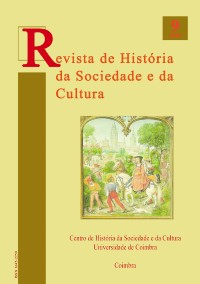Please use this identifier to cite or link to this item:
https://hdl.handle.net/10316.2/39577| DC Field | Value | Language |
|---|---|---|
| dc.contributor.author | Gomes, Saul António | - |
| dc.date.accessioned | 2016-09-28T21:15:25Z | |
| dc.date.accessioned | 2020-09-29T20:22:53Z | - |
| dc.date.available | 2016-09-28T21:15:25Z | |
| dc.date.available | 2020-09-29T20:22:53Z | - |
| dc.date.issued | 2009 | - |
| dc.identifier.issn | 1645-2259 | - |
| dc.identifier.issn | 2183-8615 (digital) | - |
| dc.identifier.uri | https://hdl.handle.net/10316.2/39577 | - |
| dc.description.abstract | Neste estudo, o Autor propõe-se analisar a história de uma comunidade feminina de clausura franciscana observante, a do Mosteiro de Jesus de Setúbal, tanto numa perspectiva de longa duração, elucidando as linhas de coerência memorial e religiosa da instituição, como, numa leitura mais conjuntural, aprofundar a análise de fontes setecentistas privilegiadas para a reconstituição de aspectos sociológicos relativos ao quotidiano festivo que se viveu na comunidade, entre os anos de 1710 e 1770. Ao rigor do quadro normativo institucional da Ordem, consagrado nas Regras e nas Constituições, sobretudo as de 1639, com circulação impressa em Portugal, a partir de 1693, justapõe-se a realidade micro-histórica destas clarissas com as suas fugas à norma mas, aparentemente, sem cedências substanciais à coerência essencial e característica da herança espiritual e social da(s) fundadora(s): Santa Clara e D. Justa Rodrigues. | por |
| dc.description.abstract | This study sets out to analyse a Franciscan contemplative community of nuns, of the Monastery of Jesus in Setúbal, both from a long term perspective by elaborating on the memorial and religious lines of the institution, and through a more focused reading of eighteenth century sources that provide us with sociological reconstructions of the lively daily habits of the community from 1710 to 1770. The rigor of the Order’s institutional normative framework, enshrined in the Rules and Constitutions, particularly those of 1639, which circulated printed from 1693 onwards, were replaced by the micro-historic reality of the clares who evaded the rule, apparently without substantially renouncing to the coherence essential and inherent to the spiritual and social heritage of its founder(s): Saint Clare and Justa Rodrigues. | eng |
| dc.language.iso | por | - |
| dc.publisher | Centro de História da Sociedade e da Cultura | - |
| dc.rights | open access | - |
| dc.subject | Modern Portuguese monasticism | eng |
| dc.subject | Clares | eng |
| dc.subject | Monastery of Jesus in Setúbal | eng |
| dc.subject | Abbesses | eng |
| dc.subject | Convent sweets | eng |
| dc.subject | Monaquismo moderno português | por |
| dc.subject | Clarissas | por |
| dc.subject | Mosteiro de Jesus de Setúbal | por |
| dc.subject | Abadessas | por |
| dc.subject | Doçaria conventual | por |
| dc.title | Doces obrigações: o exercício abacial no Mosteiro de Jesus de Setúbal – séculos XVI a XVIII | por |
| dc.type | article | - |
| uc.publication.collection | Revista de História da Sociedade e da Cultura vol. 9 | - |
| uc.publication.firstPage | 43 | - |
| uc.publication.lastPage | 85 | - |
| uc.publication.location | Coimbra | - |
| uc.publication.journalTitle | Revista de História da Sociedade e da Cultura | - |
| uc.publication.volume | 9 | por |
| dc.identifier.doi | 10.14195/1645-2259_9_2 | - |
| uc.publication.section | Artigos | - |
| uc.publication.orderno | 3 | - |
| uc.publication.area | Artes e Humanidades | - |
| uc.publication.manifest | https://dl.uc.pt/json/iiif/10316.2/39577/247371/manifest?manifest=/json/iiif/10316.2/39577/247371/manifest | - |
| uc.publication.thumbnail | https://dl.uc.pt/retrieve/11845577 | - |
| item.fulltext | With Fulltext | - |
| item.grantfulltext | open | - |
| Appears in Collections: | Revista de História da Sociedade e da Cultura | |
Files in This Item:
| File | Description | Size | Format | |
|---|---|---|---|---|
| doces_obrigacoes_o_exercicio_abacial.pdf | 1.8 MB | Adobe PDF |  |
Items in DSpace are protected by copyright, with all rights reserved, unless otherwise indicated.
